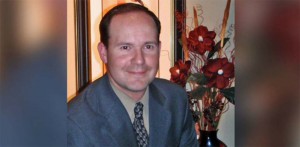Despite growing concerns about the safety of its Autopilot technology, Tesla Motors CEO Elon Musk is making it clear he has no intention of disabling the semi-autonomous driving system. If anything, the South African-born entrepreneur argues that Autopilot will save lives in the long-run.
Not everyone is quite so confident, at least not in its current beta mode. The battery-carmaker itself has confirmed the technology played at least some role in a fatal crash on May 9, and two Tesla owners have since blamed Autopilot for crashes that have occurred this month.
The National Highway Traffic Safety Administration launched a preliminary investigation following the Florida accident that killed former Navy SEAL Joshua Brown. The National Transportation Safety Board is now conducting its own investigation. Separately, the Securities and Exchange Commission is looking at Tesla’s decision not to publicly reveal the fatal crash for eight weeks – until after the maker’s latest, $2 billion stock offering.
(Third Autopilot crash reported. Click Here for more.)
Tesla has heavily promoted Autopilot as an indication of its technological prowess. And while the maker insists it has warned drivers they must be ready to immediately regain control of their vehicles if they malfunction. But critics say it has also heavily promoted its capabilities, leading many users to believe it is far more capable and robust than it really is. That’s underscored by YouTube videos, like one showing a driver activating the system and then climbing into the vehicle’s backseat.
“You are in effect using your customers as human guinea pigs,” Jamie Court, President of California-based Consumer Watchdog, wrote Tesla CEO Musk in a letter this week asking that the maker shut off the technology, which it can do wirelessly.
Musk has rejected that request, according to the Wall Street Journal, and said, if anything, Tesla will reach out to owners to make it clearer what Autopilot can and can’t do and how to use it properly.
The company has also pointed to the government Fatality Analysis Reporting System to support the technology, claiming that the death of 40-year-old Brown was the first fatality involving Autopilot after 130 million miles of use by Tesla owners. According to the FARS database, the average for all U.S. vehicles is 1.08 deaths per 100 million miles as of 2014. Since Autopilot is relatively new, however, it is unclear if its data can be considered statistically accurate and relevant yet.
(Tesla numbers up for Q2 but sales, production fall short of goal. Click Here for more.)
NHTSA could eventually overrule the decision to keep Autopilot active. But the safety agency hasn’t given a timetable for its review of the technology. Nor has the NTSB. That agency today revealed the content of a nine-page letter sent to Tesla on July 8. Tesla is required to issue a response in the coming weeks.
Among other things, the NTSB wants to know about design changes and updates to the Autopilot system and is asking if other revisions are set to be released over the next four months. New Tesla products come from the factory with Autopilot installed. But the vehicles already on the road can receive over-the-air, or OTA, updates.
The NTSB request asks about so-called false positives, where the system took action – or required driver intervention – when there was no real problem.
The California automaker separately faces a probe by the SEC which wants to know why Tesla waited almost two months after the May 9 crash to publicly reveal the incident. Musk has tweeted that the fatality was “not material” to Tesla’s stock price.
The maker’s stock has been riding a roller-coaster in recent months, rising sharply over good news and then falling on bad news such as its second-quarter production and sales shortfalls. TSLA shares ended Tuesday trading at $222.53, down $2.12 a share, or 0.94 percent.
(For more on the fatal Tesla Autopilot crash, Click Here.)


